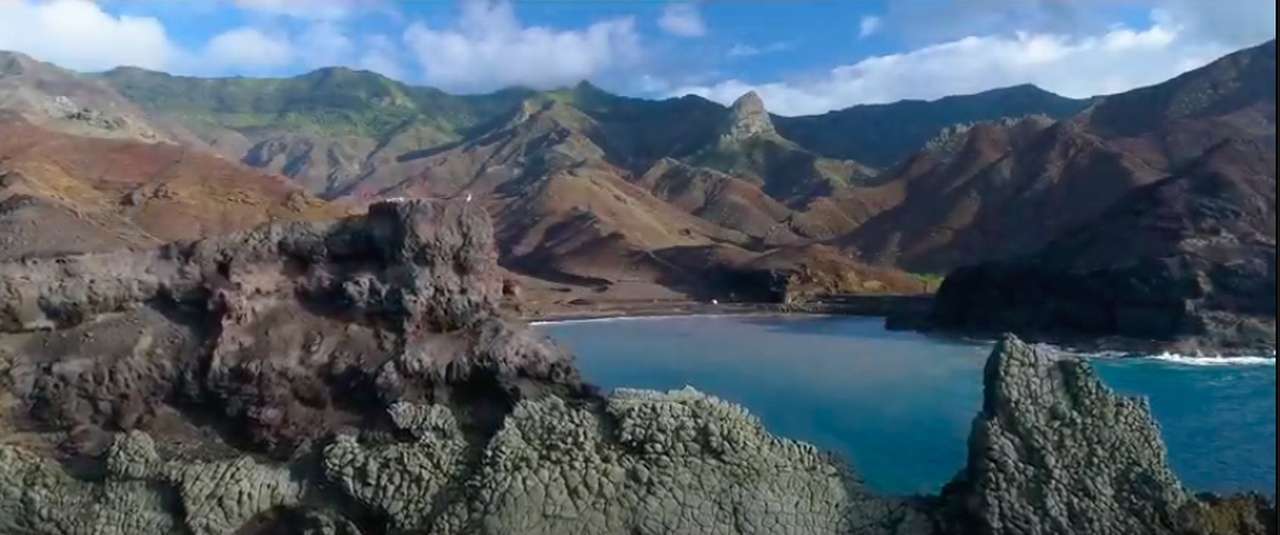You can’t get more remote than the sub-tropical Island of St Helena. It encompasses Ascension and Tristan da Cunha and its nearest neighbour, South Africa’s Angolan coast, is 1000 miles away. Seen from above it looks like a mere speck floating in the middle of the South Atlantic Ocean.
The island has remained covid free throughout the pandemic and to date, 98 per cent of the population has been vaccinated. St Helena is opening its doors once more to overseas visitors.
Though the island may not be top of the mind, the name St Helena may ring a bell. Perhaps it turned up in a history lesson as the place Napoleon Bonaparte was exiled to in 1815. He lived and died at Longwood House, which is now a Napoleonic museum of some standing.
The tropical, volcanic landscape of this British Overseas territory is packaged together in a speck of land that’s just 10 by 5 miles. There are only 4700 locals, called Saints, and they both love their tiny island and are very proud of their British heritage. Indeed, a picture of the Queen tends to show up in many of their homes. The local lingo is English and you can spend your pound sterling. But that’s where the resemblance with Blighty ends.
The internet arrived in 2015 and is still expensive, the idea of a selfie hasn’t yet caught on, there are no ATMs, cash is still king here, banks are closed at weekends and chain shops are nowhere to be seen and indeed forget shopping altogether on weekends and after 4pm.
Their only link with the rest of the world was the RMS St Helena who for 27 years turned up every three weeks delivering people and cargo. To catch it you would have had to fly to Cape Town or Johannesburg to board her then sail for five days to arrive. Her last voyage was in early 2018.
Things got easier when 2017, their airport was opened and now there are twice-weekly flights from South Africa. It’s still a bit of a shlep to get there but if you have the time it’s probably worth it for something so out of the way.
It’s all about the outdoors at St Helena where daredevil hikers can brave the island’s mountain trails including trek up Diana’s Peak which at 823m is the highest point of the island. If you do, you will be rewarded with incredible 360 degree views.
Then climb the 699 steps of Jacob’s Ladder, the 180m stairway to the fort above Jamestown – this is no mean feat so much so that you can even buy a certificate stating you complete this.
Then there’s the beautiful Heartshaped waterfall that cascades over a heart-shaped rock face and for even more ogle factor there’s Jonathan. Jonathan is a giant tortoise who lives at Planation House and at 190 years old may well be the oldest living creature in the work.
For sheer wildlife get out on a boat with binoculars in hand and look out for brown and black noddies, red-billed tropicbirds, masked boobies, Madeiran storm petrels. And dolphins. Hundreds of them in pods is a normal sighting. Between January and March, you can even swim with sharks – they are huge but gentle.
Where to stay in St Helena?
The Mantis St Helena is a relatively new luxury hotel with a great location in Jamestown. Though for something more in tune with the Island there are B&BS, guesthouses and small hotels. Or even go self-catering.
Food and drink?
Naturally, there are pubs, (it is British after all) and some lovely restaurants dotted around the island. This is mountainous land and so you’ll get to enjoy fine views while dining. Menus generally offer fish such as tuna in a steak or fishcake. there are meat dishes and pumpkin features as a local speciality.
The local tipple is Tungi made from prickly pear, gin, brandy and coffee liqueur.
If you love your first drink of the day to be coffee, then the Saint Helena Coffee will be the wake up you need. They say Napoleon love it and you can actually buy in Harrods, in London if you find yourself craving it.
Getting there
You have to fly to Johannesburg and from there take a six-hour Airlink flight to St Helena.
More info: St Helena Tourism

